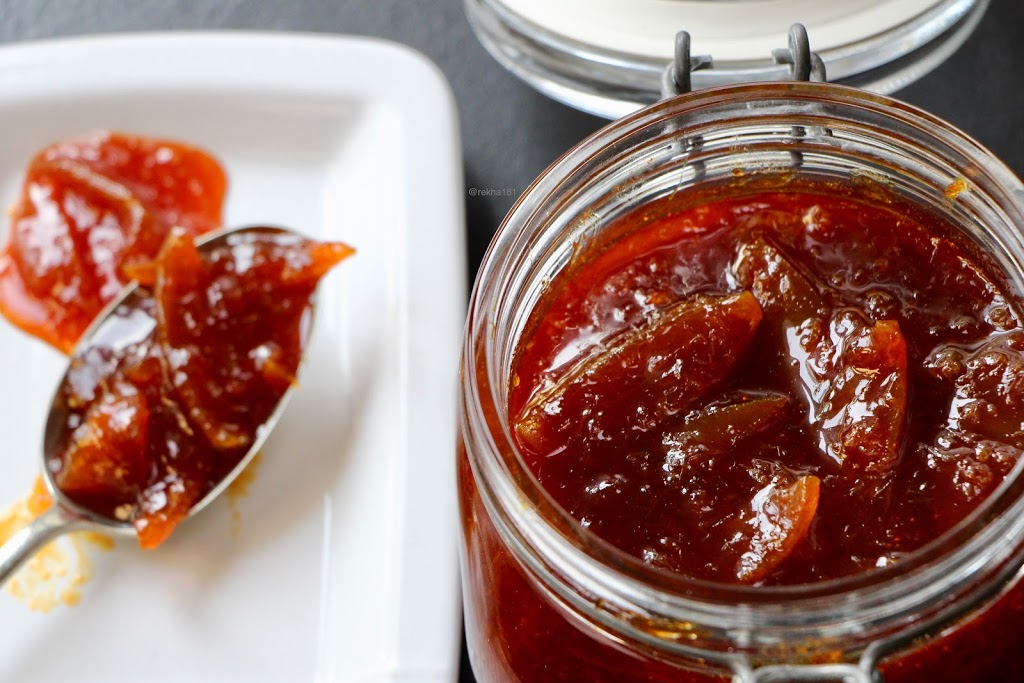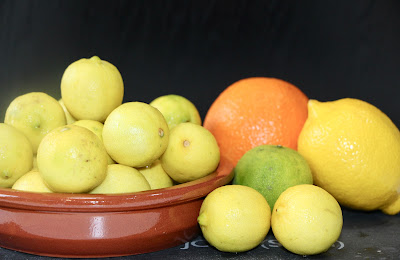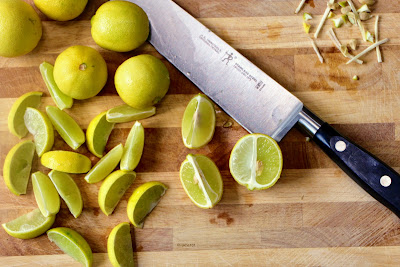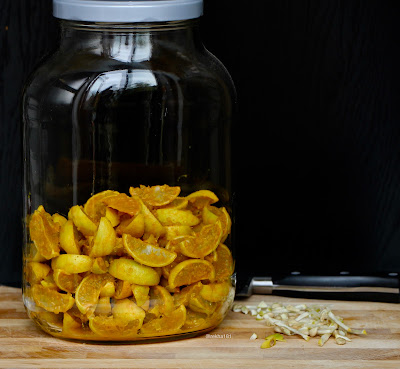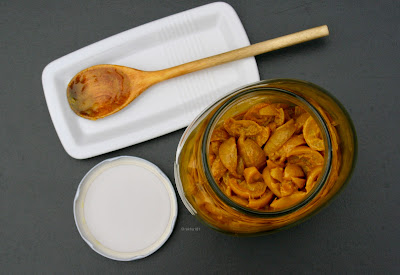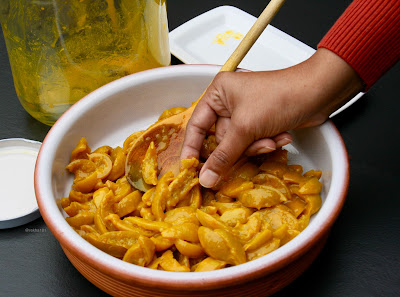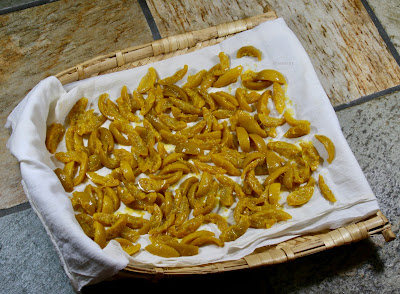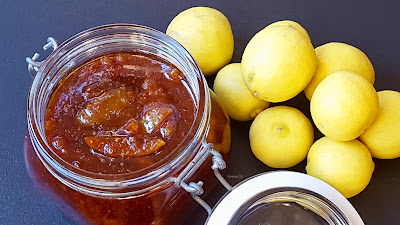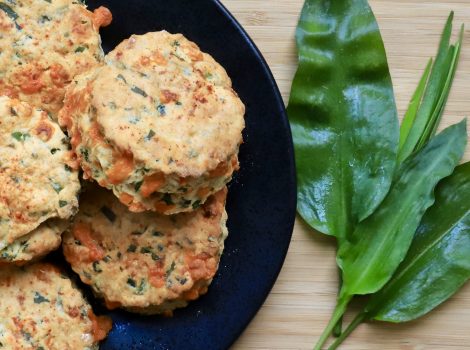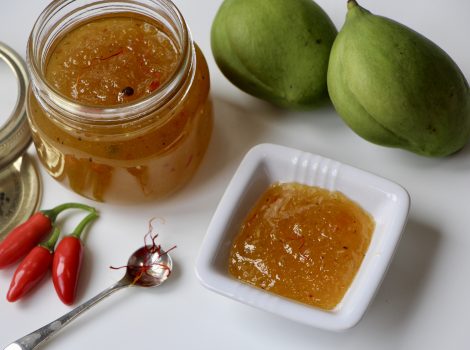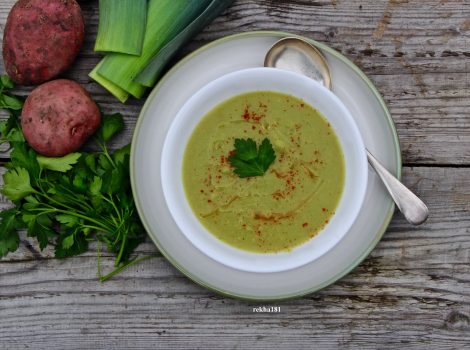(Key Lime) Indian Pickle
My recent trip to India brought me close to a much loved Lime Pickle and my Aunt, back in our village, explained the process, step by step, as she had already made her batch of this Pickle.
Just so you know, my Aunt (Pushpa Kaki: kaki means Aunt) is renowned for this Lime Pickle, so trying to recreate it exactly like her’s, back home in UK, was my biggest challenge, let alone trying to find Indian Limes in London.
The reason for using Key Limes; I found them to be the closest variety of Limes to the Indian Limes, (Limbu or Nimbu, as they are known in India) I can get to, to make my very own Lime Pickle. During my research, these Key Limes, are from the same variety (I am assuming, please correct me if I am wrong) just different growing conditions varying from Florida Keys (where it gets it name from: Key Lime that which goes into making the famous Key Lime Pies), Mexico, Egypt and India.
Reason for using this Lime variety and not the Mediterranean variety, is that the Peel (Skin) of Key Limes and Indian Limes are very thin, ideal for pickling; with no or very little Pith (the white bitter part between the Peel and juicy Segments) too, and the Key Lime Pulp (Juicy Segments) holds a lot of the somewhat, rather sweet sour juice.
Photographs in my blog: quantity of Lime used is 3 times the amount from the recipe below:
Take 200g of fresh, ripe and unblemished Limes and wash them well in cold water. Pat them dry. Cut them in half lengthways, (this makes it easier to take the pips out and also to cut off the central white Pith easily). The size of the Lime Pickle pieces, is preference thing, my Aunt cuts hers into quarter (again lengthways) but I opted for more ‘slimmer’ pieces, so cut them into eighths.
Once all pips and pith has been removed, place the pieces in a non reactive bowl (glass or ceramic) and add 2 heap tablespoon of Sea Salt and 1 heap teaspoon of Turmeric powder. Mix well. Place these coated Lime pieces in a Jar with a tight fitting lid. Store in a cool dark cupboard for 4 to 5 week. Remove the jar and give the contents, a good stir on a weekly basis.
I thought this brining process and weekly stirring of the contents, I will not like the smell; but it surprised me, the aroma was so lovely and citrusy, I would leave the jar open for a second or two longer, every week, as the aroma would fill the Kitchen with this lovely citrus smell.
My Aunt told me, confidently, that I will know exactly when the lime pieces are ready. At that time I just looked at her thinking ‘please don’t put that much confidence in me!’ But she was right, by week 5, I saw exactly what she meant.
When I removed them from the jar and pressed a piece between my finger and thumb, it fell apart like it had just been cooked. This was the moment, I knew, the Lime pieces had brined right the way through and ready for the next process.
As there is a lot of brine on them, wash the pieces out gently, (you do not want to loose a lot of the pulp) in cold water and drain. Place the drained pieces on several old tea towels (as the towels will stain from the turmeric) and allow to dry completely. In India the drying process is a matter of a couple of hours; here in UK in the autumn months, a different story altogether. I left them out to dry overnight (place a paper towel lightly on top) and that did the trick.
Final process to this Pickle. Decide on the ‘colour’ of the Pickle, dark or light.
For dark Pickle use dark brown sugar, for light, use ordinary granulated cane sugar.
I opted for dark, just like my Kaki’s Pickle colour.
Take the same amount of sugar to lime, in this case 200g and place in a Pan, add about 30ml of water, and on a gentle heat dissolve the sugar. Once dissolved add the limes and Red chilli powder, this is per taste. I will say start with 1 heap teaspoon and taste, if you like it a little more spicer, add more at this stage.
Allow the mixture to simmer gently giving it a stir often. This should take no more than 20 minutes, when the syrupy mixture ‘falls away’ slowly from the spatula (just like making jam) add a little sunflower oil and give it a good stir. Take the Pan off the heat and allow to settle a little, before storing in a sterilised jar with a tight fitting lid.
This pickle will store well for up to a year, once opened keep in a cool dark cupboard, without the need to store in the fridge.
